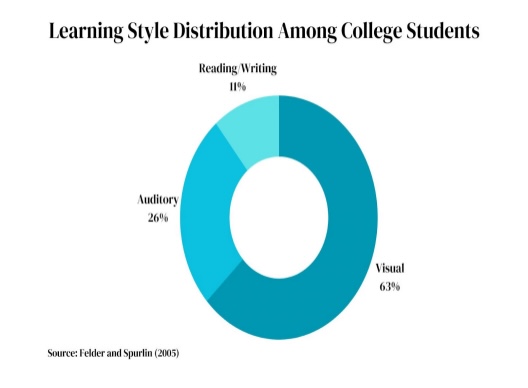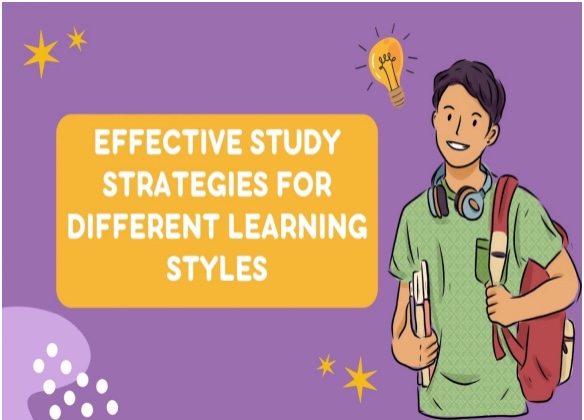As students, we each absorb and process information in our unique way. When learning is tailored to your natural inclinations, the possibilities are limitless. Some of us thrive on visual aids, such as diagrams and charts, while others prefer learning through lectures or reading. Still, others learn best through hands-on activities. Recognizing and understanding our learning styles can significantly enhance our ability to develop effective study strategies.
In this article, we will explore the diverse spectrum of learning styles and provide you with strategies tailored to your specific needs. Whether you’re a visual, auditory, verbal, or kinesthetic learner, you’ll discover study methods designed to optimize your comprehension and retention. We’ll also discuss ways to overcome the learning challenges we all face at times, along with how to use technology to augment our study efforts.
Table of Contents
Finding Your Learning Style
Before strategizing, we must identify our natural groove. Here are some prominent styles to consider:
Visual learners absorb information effectively through visual aids like diagrams, charts, illustrations, colors, and spatial organization. Studies suggest around 65% of us are visual learners. When I need to learn complex processes like biology or physics, I often turn to science tutoring online services that provide interactive flowcharts and visualizations to deeply solidify concepts.
Auditory learners comprehend well by listening to lectures, discussions, music, and verbal instructions. Around 30% resonate with this auditory style, shining in classrooms that emphasize sounds and speech. As an auditory learner myself, I find recording lectures and reviewing them helps me retain key points.
Kinesthetic learners flourish through hands-on, experiential approaches. They learn by doing – through real-life examples, experiments, and physical activities. This style is especially prevalent among physiotherapy students, tying to higher academic performance. My kinesthetic friend retains information best when actively applying concepts through experiments.

The accompanying pie chart offers a valuable visual representation, revealing the distribution of learning styles among students based on the Index of Learning Styles study. It reveals the prominence of visual learning, with over 60% of students identifying with that style. The auditory and reading/writing styles comprise the remaining categories. Illustrating these percentages vividly reinforces the prevalence of certain styles over others.
Verbal learners excel when articulating ideas via speech, reading, writing, and discourse. A verbal learner in my study group taught us concepts by describing them out loud – reinforcing her learning while helping us!
Logical learners rely on logic, systems, and clear sequences. They thrive on order, consistency, and structured approaches. My roommate creates meticulous schedules, outlines, and workflows to optimize understanding.
Now let’s enhance learning through customized techniques!
Customizing Study Strategies
Aligning methods with our inclinations enhances focus and retention substantially. Here are some tips:
For Visual Thinkers
To learn visually, leverage diagrams, charts, illustrations, colors, videos, and mental imagery. I mind-map chapters using branches, colors, and pictures for deeper connections. Visual aids transform plain facts into engaging stories that stick. Other techniques include color-coded notes, explanatory videos, graphic organizers, and visualizing concepts.
For Auditory Talent
Prioritize techniques involving sound, speech, and music. I record myself reading notes aloud, then listen back for retention. Discussing concepts reinforces them, while mnemonics help memorize steps through catchy rhythms. Educational podcasts and lectures align with auditory inclinations, allowing learning through listening.
Kinesthetic Learners
Engage your body and have hands-on experiences. Study in bursts with activity breaks. Kinesthetic friends learn by associating concepts with movements and through experiments that impart tangible experiences. Multisensory techniques like verbalizing diagrams merge kinesthetic motion with visual and auditory learning.
For Verbal Affinity
Leverage the power of language. Describing concepts aloud helps verbal learners solidify mastery. Study groups enable discussion-based reinforcement. Mnemonics and word associations boost memorization while reading textbooks aloud can enhance focus. Teaching others combines verbal explanation with deeper comprehension.
Logical Learners
Incorporate structure-focused techniques. Breaking topics into systematic, step-by-step processes boosts understanding. Neatly organizing notes through outlines creates order ideal for logical inclinations. Scheduling fixed study hours establishes consistent routines while explaining the reasoning behind concepts satisfies the analytical mind.
Overcoming Learning Challenges
While understanding our natural styles is insightful, we all face certain learning challenges. I tend to struggle to concentrate on verbal lectures. My auditory friend gets overwhelmed by complex charts. Being aware of these obstacles is key to conquering them.
Some tips that have helped me push past difficulties:
- Focus on weak areas: Devote extra time to practicing unnatural styles. I force myself to outline textbook chapters verbally.
- Try new approaches; experiment with methods outside your comfort zone for versatility. My visual friend now uses online tutoring to strengthen auditory learning.
- Get support: Study groups, tutors, and office hours guide to fill gaps. I attended review sessions to reinforce verbal lectures.
- Take breaks: Step away when frustrated and recharge. I go for a quick walk to refresh my mind.
- Be patient: Learning new skills takes time and practice. Stick with it!
Through consistent effort, we can strengthen our less natural styles and become well-rounded learners. The rewards of persevering through challenges are immense.
Building Study Habits
Beyond styles, effective habits maximize success:
- Avoid distractions: Studying sans smartphones and TV boosts focus and retention. I head to the library for intense distraction-free learning.
- Consistency: Maintaining fixed schedules prevents procrastination while breeding success through regularity.
- Take breathers: Long study demands breaks for rejuvenation. I find brief walks refreshing.
- Organization: Tools like reminders, folders, and schedules promote efficiency.
- Self-analysis: Assessing accomplishments and improvement areas provides insight.
- Proper rest: Good sleep and nutrition enhance cognitive performance and memory.
Frequently Asked Questions (FAQs)
How do I know my style?
Observe your instincts and analyze strengths/weaknesses. When do you feel engaged and perform best? That’s often indicative of your style. Experiment with different approaches to discover what sticks.
Can I use multiple styles?
Absolutely! A versatile learner incorporates diverse techniques for well-rounded excellence. I assimilate visual, auditory, and verbal methods in my study practice.
How can I support different styles?
We often learn effectively by teaching others in our innate style. However, study groups with varying strengths allow collaborative growth through our diversity.
Are styles fixed?
Not at all! With practice, you can develop flexibility and enhance new styles. For instance, I strengthened my visual inclinations by consistently using charts to reinforce my learning.
Moving Forward
Understanding and applying your learning preferences can be truly transformative. But versatility is key for maximal growth – integrate diverse strategies outside your comfort zone. I welcome you to share your experiences in the comments to enlighten others! Let’s keep growing our collective learning potential.
